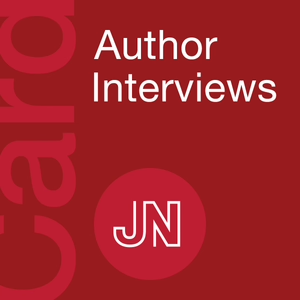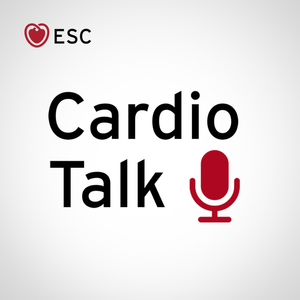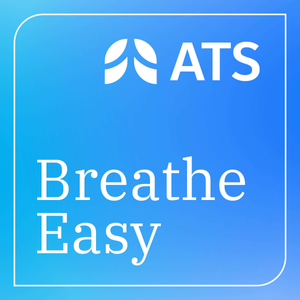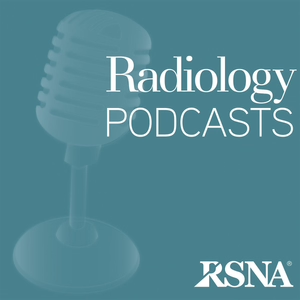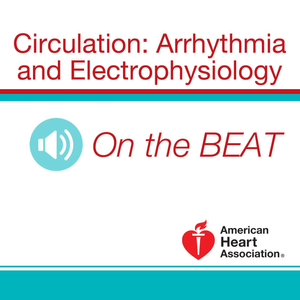
Circulation: Arrhythmia and Electrophysiology On the Beat February 2018
02/20/18 • 54 min
Dr Wong: Welcome to the monthly podcast, "On The Beat, for Circulation: Arrhythmia, and Electrophysiology." I'm doctor Paul Wong, editor in chief, with some of the key highlights from this month's issue. We'll also here from Dr. Suraj Kapa reporting on new research from the latest journal articles in the field.
In our first article, Mathew Daly and associates examine whether a high-resolution, 9 French, infrared thermography catheter can continuously image esophageal temperatures during atrial fibrillation catheter ablation. The infrared temperature catheter was inserted nasally or orally into the esophagus, adjacent to the left atrium. Endoscopy was performed within 24 hours to document esophageal injury. Thermal imaging showed that 10 out of 16 patients experienced one or more events where the peak esophageal temperature was greater than 40 degrees centigrade. Three patients experienced temperatures greater than 50 degrees centigrade and one experienced greater than 60 degrees centigrade. Analysis of temperature data from each subject's maximal thermal event revealed high radius, 2.3 degrees centigrade per millimeter and rates of change 1.5 degrees centigrade per second, with an average length of esophageal involvement of 11.0 millimeters.
Endoscopy identified three distinct thermal lesions, all in patients with temperatures greater than 50 degrees centigrade, all resolving within two weeks. The authors concluded that infrared thermography, high-resolution mapping of esophageal temperatures during catheter ablation may be performed. Esophageal thermal injury occurs with temperatures greater than 50 degrees centigrade, and was associated with large spacial-temporal gradients.
In our next article, Nitesh Sood and associates reported on the real-world incidence and predictors of perioperative complications in transvenous lead extractions involving ICD leads in the NCDR ICD registry. Lead extraction was defined as removal of leads implanted for greater than one year. Predictors of major perioperative complication for all extraction procedures, 11,304, and for high voltage leads, 8,362, or 74% across 762 centers were analyzed, using univariate and multivariate logistic regression. Major complications occurred in 258, or 2.3% of the extraction procedures. Of these, 258 procedures with a complication, 41 or 16% required urgent cardiac surgery. Of these, 14 or 34% died during surgery. Among the total 98, or 0.9% deaths reported, 18 or 0.16% of the total occurred during extraction.
In multivariate, logistic regression analysis of all extractions, female sex, admission other than electively for the procedure, three or more leads extracted, longer implant duration, dislodgement of other leads, patients' clinical status, requiring lead extraction, such as infection or perforation, were associated with increased risk of complications. For high voltage leads, smaller lead diameter, a flat versus round coil shape, in greater proximal surface coil area, were multivariate predictors of major perioperative complications.
The rate of major complications and mortality with transvenous lead extraction is similar in the real world compared to single center studies from high volume centers. There remains a significant risk of urgent cardiac surgery with a very high mortality, and planning for appropriate cardiothoracic surgical backup is imperative.
In our next paper, Bence Hegyi and associates, have reported on the repolarization reserve in failing rabbit ventricular myocytes, and the role of calcium and beta-adrenergic effects on delayed and inward rectifier potassium currents. The authors measured the major potassium currents, IKr, IKs, IK1, and their calcium and beta-adrenergic dependence in rabbit ventricular myocytes, in chronic pressure, in volume overload, induced heart failure, and compared them to age-matched controls.
The authors made a number of observations. One, action potential duration was significantly prolonged only at lower pacing rates, 0.2 to 1 Hertz, in heart failure under physiological ionic conditions and temperature. Two, beat to beat variability of action potential duration was also significantly increased in heart failure. Three, both IKr and IKs were significantly regulated in heart failure under action potential clamp but only when cytosolic calcium was not buffered. Four, CaMKII inhibition abolished IKs upregulation in heart failure, but did not affect IKr. Five, IKs response to beta-adrenergic stimulation was also significantly diminished in heart failure, and, six, IK1 was also decreased in heart failure regardless of calcium buffering, CaMKII inhibition or beta-adrenergic stimulation.
These observations changed when cytosolic calcium was buffered. The action potential prolongation in heart failure was also significant in higher pacing rates. The authors concluded that in heart failure, calcium dependent up regulation of IKr ...
Dr Wong: Welcome to the monthly podcast, "On The Beat, for Circulation: Arrhythmia, and Electrophysiology." I'm doctor Paul Wong, editor in chief, with some of the key highlights from this month's issue. We'll also here from Dr. Suraj Kapa reporting on new research from the latest journal articles in the field.
In our first article, Mathew Daly and associates examine whether a high-resolution, 9 French, infrared thermography catheter can continuously image esophageal temperatures during atrial fibrillation catheter ablation. The infrared temperature catheter was inserted nasally or orally into the esophagus, adjacent to the left atrium. Endoscopy was performed within 24 hours to document esophageal injury. Thermal imaging showed that 10 out of 16 patients experienced one or more events where the peak esophageal temperature was greater than 40 degrees centigrade. Three patients experienced temperatures greater than 50 degrees centigrade and one experienced greater than 60 degrees centigrade. Analysis of temperature data from each subject's maximal thermal event revealed high radius, 2.3 degrees centigrade per millimeter and rates of change 1.5 degrees centigrade per second, with an average length of esophageal involvement of 11.0 millimeters.
Endoscopy identified three distinct thermal lesions, all in patients with temperatures greater than 50 degrees centigrade, all resolving within two weeks. The authors concluded that infrared thermography, high-resolution mapping of esophageal temperatures during catheter ablation may be performed. Esophageal thermal injury occurs with temperatures greater than 50 degrees centigrade, and was associated with large spacial-temporal gradients.
In our next article, Nitesh Sood and associates reported on the real-world incidence and predictors of perioperative complications in transvenous lead extractions involving ICD leads in the NCDR ICD registry. Lead extraction was defined as removal of leads implanted for greater than one year. Predictors of major perioperative complication for all extraction procedures, 11,304, and for high voltage leads, 8,362, or 74% across 762 centers were analyzed, using univariate and multivariate logistic regression. Major complications occurred in 258, or 2.3% of the extraction procedures. Of these, 258 procedures with a complication, 41 or 16% required urgent cardiac surgery. Of these, 14 or 34% died during surgery. Among the total 98, or 0.9% deaths reported, 18 or 0.16% of the total occurred during extraction.
In multivariate, logistic regression analysis of all extractions, female sex, admission other than electively for the procedure, three or more leads extracted, longer implant duration, dislodgement of other leads, patients' clinical status, requiring lead extraction, such as infection or perforation, were associated with increased risk of complications. For high voltage leads, smaller lead diameter, a flat versus round coil shape, in greater proximal surface coil area, were multivariate predictors of major perioperative complications.
The rate of major complications and mortality with transvenous lead extraction is similar in the real world compared to single center studies from high volume centers. There remains a significant risk of urgent cardiac surgery with a very high mortality, and planning for appropriate cardiothoracic surgical backup is imperative.
In our next paper, Bence Hegyi and associates, have reported on the repolarization reserve in failing rabbit ventricular myocytes, and the role of calcium and beta-adrenergic effects on delayed and inward rectifier potassium currents. The authors measured the major potassium currents, IKr, IKs, IK1, and their calcium and beta-adrenergic dependence in rabbit ventricular myocytes, in chronic pressure, in volume overload, induced heart failure, and compared them to age-matched controls.
The authors made a number of observations. One, action potential duration was significantly prolonged only at lower pacing rates, 0.2 to 1 Hertz, in heart failure under physiological ionic conditions and temperature. Two, beat to beat variability of action potential duration was also significantly increased in heart failure. Three, both IKr and IKs were significantly regulated in heart failure under action potential clamp but only when cytosolic calcium was not buffered. Four, CaMKII inhibition abolished IKs upregulation in heart failure, but did not affect IKr. Five, IKs response to beta-adrenergic stimulation was also significantly diminished in heart failure, and, six, IK1 was also decreased in heart failure regardless of calcium buffering, CaMKII inhibition or beta-adrenergic stimulation.
These observations changed when cytosolic calcium was buffered. The action potential prolongation in heart failure was also significant in higher pacing rates. The authors concluded that in heart failure, calcium dependent up regulation of IKr ...
Previous Episode
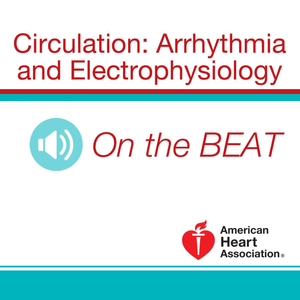
Circulation: Arrhythmia and Electrophysiology On the Beat January 2018
Dr. Paul Wong: Welcome to the monthly podcast, On The Beat, for Circulation: Arrhythmia and Electrophysiology. I'm Dr. Paul Wong, editor in chief, with some of the key highlights from this month's issue. We'll also hear from Dr. Suraj Kapa, reporting on new research from the latest journal articles in the field.
In our first article, Ratika Parkash and associates examined whether the outcomes following escalated antiarrhythmic drug therapy, or catheter ablation, depended on whether ventricular tachycardia with amiodarone refractory or sotalol refractory in patients with prior myocardial infarction in the VANISH study.
At baseline, 169, or 65%, were amiodarone refractory, while the remaining were sotalol refractory. Amiodarone refractory patients had more renal insufficiency; 23.7% versus 10%. Worse, new ARC Heart Association class, 82.3% versus 65.5% class II or III; and lower ejection fraction, 29% versus 35%. Within the amiodarone refractory group, ablation resulted in a reduction of any ventricular arrhythmias compared to escalated drug therapy, with a hazard ratio of 0.53, P = 0.02.
Sotalol refractory patients had trends towards higher mortality in VT storm with ablation, with no effect on ICD shocks. Within the escalated drug arm, amiodarone refractory patients had a higher rate of composite endpoint, with a hazard ratio of 1.94 and a P value of 0.01. In a trend toward higher mortality, hazard ratio 2.4, P = 0.07. While mortality was not different between amiodarone and sotalol refractory patients within the ablation treatment group.
In our next study, Junaid Zaman and associates examined 57 cases in which local ablation of persistent atrial fibrillation terminated to sinus rhythm or organized tachycardia. The authors analyze unipolar electrograms collected during atrial fibrillation from multi-polar basket catheters to reconstruct isochronal activation maps for multiple cycles, and computational modeling and phase analysis were used to study mechanisms of map variability.
At all signs of atrial fibrillation termination, localized, repetitive activation patterns were observed, 21% with complete rotational activity, 46% with partial rotational circuits, and 33% with focal patterns. In computer simulations incomplete segments of partial rotations coincided with areas of slow conduction, characterized by complex, multi-component electrograms.
In our next article, Matthew Kalscheur and associates sought to use a novel machine-learning approach to predict outcomes following resynchronization therapy in the companion trial. The random forest algorithm resulted in the best performing model. In 595 CRTD patients in the companion trial, 105 deaths occurred, with a median follow-up of 15.7 months. The survival difference across subgroups differentiated by bundle branch block morphology and cure restoration did not reach significance, P = 0.08. The random forest model, however, produced quartiles of patients with an eight-fold difference in survival between those with the highest and lowest predictive probability for events, hazard ratio 7.96 with a P value of less than 0.0001.
The model also discriminated the risk of composite endpoint of all cause mortality, or heart failure hospitalization, better than subgroups based on bundle branch block morphology and cure restoration. Future studies are needed to validate this model in other populations.
In our next paper, Amr Barakat and associates examined the clinical outcomes of trans-venous lead extraction for CIED infection based on renal function. The authors examined 1,420 consecutive patients undergoing trans-venous lead extraction of infected CIEDs over a 14 year period. Groups with normal renal function, Group 1, consisting of 1,159 patients, Group 2, 163 patients with renal dysfunction not requiring dialysis, and Group 3, 98 patients on dialysis. Complete procedural success rates were comparable in the three groups: 94%, 96%, and 94% in Groups 1, 2 and 3, respectively. This was not statistically significant.
The mortality rates were significantly higher in dialysis patients at one month. The procedure-related complication was 12.2% in dialysis patients versus 6.5% in Group 1 and 6.1% in Group 2. Other factors associated with mortality were lead material retention, functional New York Heart Association Class, and occurrence of procedural complications.
In our next paper, Eric Johnson and associates studied the contribution of the current ITO, two left ventricular re-polarization in the human heart, since the current has been shown to have an important role in animal models. The authors found that using whole-cell voltage clamp recordings from myocytes, isolated from the left ventricle, non-failing human hearts, that there were two, distinct transient currents, ITO fast and ITO slow.
The two currents have significantly different rates of recovery from inactivation and pharmacolo...
Next Episode
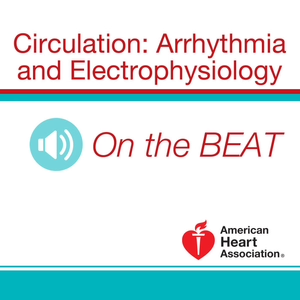
Circulation: Arrhythmia and Electrophysiology On the Beat March 2018
Paul Wang: Welcome to the monthly podcast “On The Beat”, for Circulation: Arrhythmia and Electrophysiology. I am Dr. Paul Wang, Editor-in-Chief, with some of the key highlights from this month's issue. We'll also hear from Dr. Suraj Kapa, reporting on new research from the latest journal articles in the field.
In our first article, Adetola Ladejobi and associates studied 1,433 patients, between 2000 and 2012, who were discharged alive after sudden cardiac arrest. A reversible and correctable cause was identified in 792 patients, or 55%. A reversible cause for sudden cardiac arrest was defined as significant electrolyte or metabolic abnormality, evidence of acute myocardial infarction or ischemia, recent initiation of antiarrhythmic drug, or illicit drug use, or other reversible circumstances.
Of the 792 sudden cardiac arrest survivors, due to reversible or correctable cause, 207 or 26% of the patients received an ICD after their indexed sudden cardiac arrest. During a mean follow-up of 3.8 years, 319 or 40% of patients died. ICD implantation was highly associated with a lower all-cause mortality, p < 0.001, even after correcting for unbalanced baseline characteristics.
In subgroup analyses, only patients with sudden cardiac arrest, were not associated with myocardial infarction, extracted benefit from the ICD, p < 0.001.
The authors concluded that in survivors of sudden cardiac arrest, due to a reversible and correctable cause, ICD therapies associated with lower all-cause mortality, except if the sudden cardiac arrest was due to myocardial infarction.
Further prospect of multi-center randomized control trials will be needed to confirm this observation.
In our next study, Carlo Pappone and associates, studied 81 patients with persistent atrial fibrillation, randomized to undergo high density electrophysiological mapping, to identify repetitive regular activities, before modified circumferential pulmonary vein ablation, or modified circumferential pulmonary vein ablation alone. The primary endpoint was freedom from arrhythmia recurrence at one year.
In the 81 patients with persistent atrial fibrillation, there were 479 regions exhibiting repetitive regular activities in these patients, or 5.9 repetitive regular activities per patient. There were 232 regions in the mapping group, which consisted of 41 patients, and 247 regions in the control group, consisting of 40 patients. Overall, 39% of the repetitive regular activities were identified within pulmonary veins, whereas 61% were identified in non-pulmonary vein regions.
Mapping-guided ablation resulted in higher arrhythmia termination rate, as compared to conventional strategy, 61% vs. 30%, p < 0.007. Total RF duration, mapping, and fluoroscopy times were not significantly different between the groups. No major procedure related adverse events occurred.
After one year, 73% of the mapping group of patients were free of recurrences, compared to 50% of the control group, p = 0.03.
The authors concluded that targeted ablation of regions showing repetitive regular activities provided adjunctive benefit in terms of arrhythmia freedom at one year in treatment of patients with persistent atrial fibrillation. These findings should be confirmed by additional larger randomized multi-centered studies.
In the next article, Maciej Kubala and associates examine repolarization abnormalities in 40 patients with arrhythmogenic right ventricular cardiomyopathy, comparing extent and location of abnormal T-waves of one millimeter or greater in depth, downsloping elevated ST segment in two or more adjacent leads to the area and location of endocardial bipolar and unipolar, and epicardial bipolar voltage abnormalities. They found an abnormal unipolar right ventricular endocardial area of 33.4% with presence in eight patients without negative T-waves. Patients with negative T-waves extending beyond V3, seen in 20 patients, had larger low bipolar and unipolar endocardial areas, and larger epicardial low bipolar areas, compared to those with negative T-waves limited to leads V1 to V3.
ECG localization of negative T-waves regionalized to the location of substrate. Patients with downsloping elevated ST segment, all localized to leads V1, V2 had more unipolar endocardial abnormalities involving outflow in mid-right ventricle, compared to patients without downsloping elevated ST segment.
The authors concluded that in arrhythmogenic right ventricular cardiomyopathy, abnormal electric current areas were proportional to the extent of T-wave inversion on the 12 lead electrocardiogram. Marked voltage abnormalities can exist without repolarization changes. Downsloping elevated ST segment patterns in V1 and V2 occurs with more unipolar endocardial voltage abnormalities, consistent with more advanced trans neural disease.
In the next manuscript, Teresa Oloriz ...
If you like this episode you’ll love
Episode Comments
Generate a badge
Get a badge for your website that links back to this episode
<a href="https://goodpods.com/podcasts/circulation-arrhythmia-and-electrophysiology-on-the-beat-94401/circulation-arrhythmia-and-electrophysiology-on-the-beat-february-2018-5066106"> <img src="https://storage.googleapis.com/goodpods-images-bucket/badges/generic-badge-1.svg" alt="listen to circulation: arrhythmia and electrophysiology on the beat february 2018 on goodpods" style="width: 225px" /> </a>
Copy
